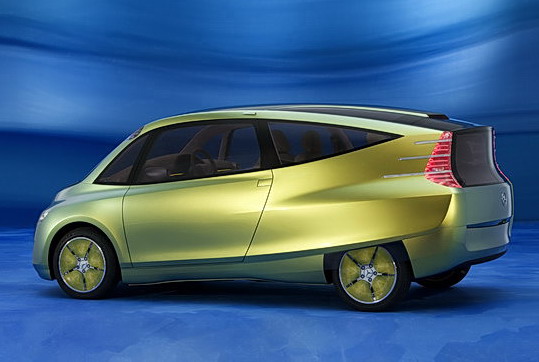 New York – The concept models of the Mercedes-Benz bionic car are appearing as part of the “Design and the Elastic Mind” exhibition at New York’s Museum of Modern Art. The exhibition at the world-famous “MoMA” showcases trailblazing innovations in the fields of design and science.
New York – The concept models of the Mercedes-Benz bionic car are appearing as part of the “Design and the Elastic Mind” exhibition at New York’s Museum of Modern Art. The exhibition at the world-famous “MoMA” showcases trailblazing innovations in the fields of design and science.
The “Design and the Elastic Mind” exhibition at The Museum of Modern Art (MoMA) in New York is devoted to the dramatic changes in aspects of human life witnessed in recent decades. The series of exhibits highlights the rapid pace of development – in mobility and communications, for example – with the focus on innovative design solutions that take into account life’s quickly changing requirements. The exhibition will be open to the public from February 24 until May 12, 2008.
One of the highlights of the exhibition is the Mercedes-Benz bionic car, which was first unveiled in June 2005 at the Innovation Symposium organized by Daimler AG in the US capital, Washington DC. As well as boasting near-perfect aerodynamics and a lightweight concept derived from nature, the car features a clean and economical high-tech diesel engine with BLUETEC technology, which plays a major part in cutting fuel consumption and reducing emissions by a substantial margin: in the EU driving cycle, the Mercedes-Benz bionic car consumes just 4.3 liters of fuel per 100 kilometers – making it 20 percent more economical than a comparable production model. With an output of 140 hp, it delivers state-of-the-art, hallmark Mercedes-Benz performance. If the US measuring system (FTP 75) is used, the figure comes in at around 70 miles per gallon (mpg, combined) – 30 percent better than a standard-production car. When driving at a constant speed of 90 km/h, the direct-injection model consumes a mere 2.8 liters of diesel per 100 kilometers – equivalent to 84 miles per gallon in the US test cycle.
Engineers, designers and biologists at Mercedes-Benz worked hand in hand to develop the Mercedes-Benz bionic car. Its template was a sea dweller from tropical latitudes: Ostracion Cubicus – more commonly known as the boxfish. Despite its unusual-looking shape, the fish is extremely aerodynamic and can therefore move using a minimal amount of energy. It is also able to withstand high pressures and, thanks to an outer skin consisting of hexagonal bone plates, can survive unscathed following collisions with corals or other sea dwellers. In free flow, its body has an outstandingly low cd value of 0.06. These characteristics are also ideal ingredients for a car designed to achieve the best possible levels of energy efficiency and passenger safety.
The result is a two-door vehicle with four comfortable, individual seats and a drop-shaped design that is 4.24 meters long, 1.82 meters wide and 1.59 meters high. With a drag coefficient (cd figure) of 0.19, the Mercedes-Benz bionic car is one of the world’s most aerodynamic compact cars in its class. Today, this figure still stands as a benchmark for the aerodynamic optimization of car bodies.
The concept vehicle also played a pioneering role for Mercedes-Benz when it came to emission control. It was the first test car to be fitted with SCR (Selective Catalytic Reduction) technology. The emission-control technology, which Mercedes‑Benz calls BLUETEC, has been available for commercial vehicles since 2005 and in the
E-Class 320 BLUETEC since October 2006. Another three vehicles featuring the world’s cleanest diesel will be launched before the end of this year.
In consultation with bionics experts, a process was developed to transfer the growth principle used by nature to automobile engineering. Based on the Soft Kill Option (SKO), computer simulation is used to configure body and suspension components in such a way that the material in areas subject to lower loads can be made thinner, and perhaps even be eliminated (“killed”), while highly stressed areas are specifically reinforced. This process enables an optimal component geometry to be identified that meets the requirements of lightweight construction, safety and durability in equal measure. The bone-plate skeleton of the boxfish demonstrates how nature is able to achieve maximum strength with a lightweight design. In the case of a car door, for example, this honeycomb-design method increases stiffness by up to 40 percent, while the weight is reduced by around 30 percent, based on calculations using the SKO method. The SKO method has since been used for producing components such as the engine support arms that are fitted on some rural-service buses.
The “Design and the Elastic Mind” exhibition at New York’s MoMA acknowledges the work of the Mercedes-Benz designers and honors the powers of innovation, based on extremely flexible trains of thought, displayed by the research and development departments. The collection of individual exhibits aims to give visitors an overview of the latest developments from practically every discipline of science, research and design.
###

Source:
Daimler


Pingback: tattoo